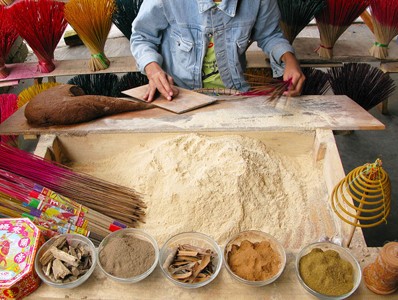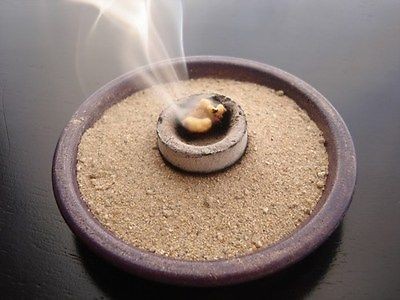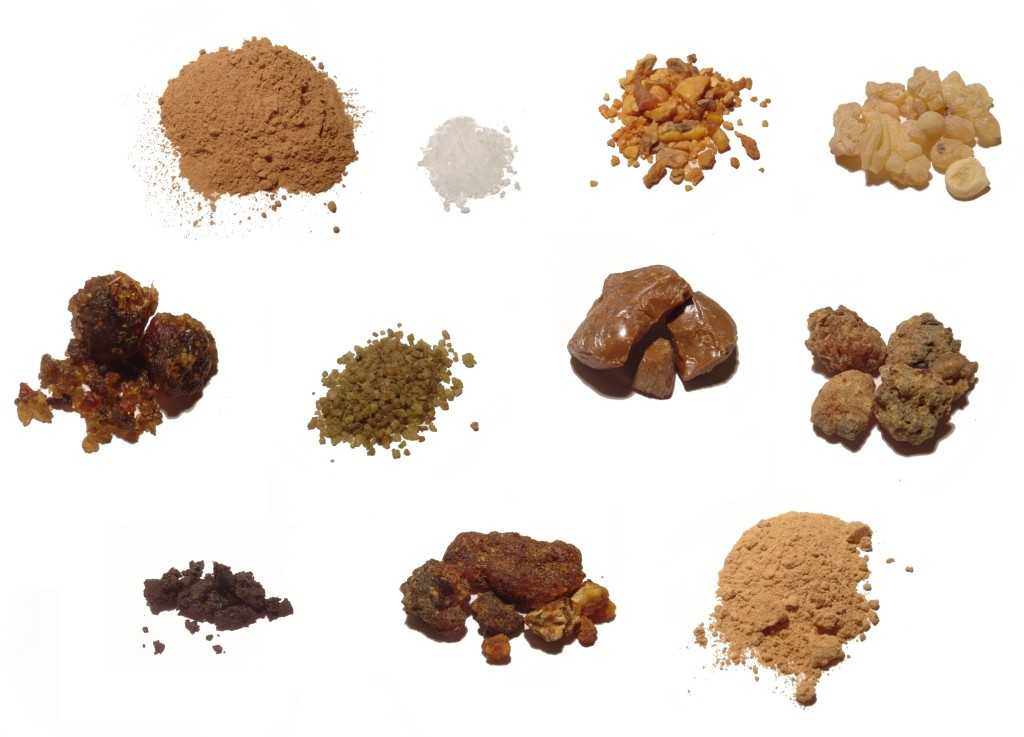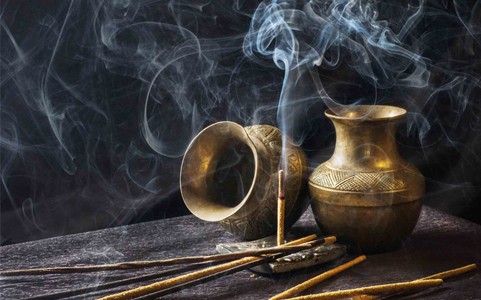How is incense made? In ancient times, the people who made composite incense were those who possessed the appropriate...
How to burn incense
What do I need? Incense, charcoal, tweezers, torch or lighter and burner.






For further clarification, let us first look at resins.
RESINS. Resins are not all the same, but can be divided into two main groups: resins that leave a residue when burned and resins that dissolve completely.
Resins that leave a residue when burnt: this type of resin includes all those that do not burn completely but leave a residue, usually due to the impurities they contain. If we burn one of these resins, we will find residues on the charcoal when the burning process is finished. Some examples of these resins are MIRRA, BOSWELLIA resin (all types), BORENA, etc. The problem with these resins is that the combustion residue tends to carbonise and produce a typical 'burnt' smell, which is not pleasant. There are some tricks that can help to limit this problem:
Remove the incense residue from the charcoal with a simple spoon before it carbonises (i.e. before it turns black and charred) and produces the unpleasant smell. You can do this as often as you like, for as long as the charcoal lasts, and it will always ensure a great smell.
By reducing the resins to powder, the charring phenomenon, although always present, will be less noticeable and the smell of burning will be lighter. However, this presupposes that you use a mortar or other means to reduce the resin grains to powder. The drawback in this case is preservation, as pulverised resins lose their aroma more quickly than if left whole. It may be advisable to pulverise the resins just before use rather than stocking up on pulverised resin.
WOOD, LEAVES, ROOTS, SEEDS
When burning these types of incense, it is good to be aware of a few things that always apply: all of these incenses produce residue when they burn, and will therefore produce a 'burnt' smell towards the end of the burn. Reducing the incense to powder helps to reduce this problem. The fragrances of these types of incense are generally more delicate than the resins, so if you want to make blends, it is a good idea to bear this in mind in order to balance the quantities. Although these incense sticks can be burned directly on charcoal, some people find that a preparation helps to achieve better results. An example of this is CARDAMOME, which gives an excellent fragrance when burned whole, but the result is even better if it is first crushed to free the seeds from the shell. These types of incense should always be burned after being DRYED. An example would be ROSEMARY, if you burn it fresh you will notice that it tends to produce a burnt smell very quickly; if you dry it and then burn it, the scent produced will be more intense and the burnt smell much less.
CARBONCINI
They take the form of self-burning charcoal wafers which, once lit, burn by themselves. The incense must be placed on the burning charcoal to release its fragrance. Charcoal has the great advantage of being easy to use and, thanks to the high temperature it reaches, it is suitable for burning all types of incense, whether plant, resin or otherwise. There are two types:
1) fast-burning: these wafers, which are thin and not very curved, with a thickness of about half a centimetre, ignite very quickly and last on average 20/25 minutes. Because of the high sulphur and saltpetre content, a considerable amount of smoke is produced at the time of ignition. It is advisable to light them near an open window or directly in the open air.
2) Slow-burning: they burn slowly and do not give off as much smoke as the others; on average, a charcoal lasts 45 to 60 minutes.
WARNING: charcoal develops a very high temperature, so DO NOT place it on any surface that could be damaged.
AVOID: ashtrays made of glass, plastic or metal (as well as becoming incandescent, they will burn whatever they are placed on).
Any support that is not afraid of heat can be used, such as: stone ashtrays, incense burners, stone or metal essence burners.
The best supports for using charcoal are special burners that can be made of different materials.





Leave a comment